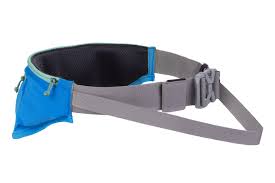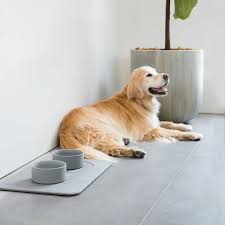The Benefits of Using Crates for Your Dog
Crates are often a misunderstood tool when it comes to caring for your dog. Some may view them as cages, but when used correctly, crates can provide numerous benefits for both you and your furry friend.
Safety and Security
A crate can serve as a safe haven for your dog, especially when you’re not around to supervise. It keeps them out of harm’s way and prevents them from getting into potentially dangerous situations at home.
Training Aid
Crates are valuable tools in house training your dog. Dogs have a natural instinct to keep their den clean, so a crate can help reinforce good potty habits and prevent accidents inside the house.
Travel Companion
When traveling with your dog, a crate provides a secure and familiar space for them to relax in. It can reduce anxiety during car rides or flights and make the journey more comfortable for your pet.
Managing Behavior
If your dog tends to chew on furniture or shoes when unsupervised, a crate can help prevent destructive behavior by giving them a designated space of their own.
Comfort Zone
Contrary to popular belief, most dogs see their crates as cozy retreats rather than confinement. It gives them a sense of security and ownership over their personal space.
Conclusion
Incorporating a crate into your dog’s routine can have numerous benefits that enhance their well-being and improve your relationship with them. Remember to introduce the crate gradually and always associate it with positive experiences to make it a welcoming place for your furry companion.
9 Essential Tips for Successful Crate Training Your Pet
- Choose the right size crate for your pet to ensure comfort and safety.
- Introduce the crate gradually to help your pet feel comfortable and secure inside.
- Use positive reinforcement such as treats and praise to create a positive association with the crate.
- Never use the crate as a form of punishment to avoid negative associations.
- Make the crate cozy with bedding, toys, and familiar scents to make it inviting for your pet.
- Avoid leaving your pet in the crate for extended periods to prevent stress or anxiety.
- Supervise your pet when they are in the crate to ensure their well-being and safety.
- Regularly clean the crate to maintain hygiene and prevent odors that may deter your pet from using it.
- Consult with a veterinarian or animal behaviorist if you encounter difficulties with crate training.
Choose the right size crate for your pet to ensure comfort and safety.
When selecting a crate for your pet, it is crucial to choose the appropriate size to guarantee their comfort and safety. A crate that is too small can be restrictive and uncomfortable for your pet, while a crate that is too large may not provide the security they need. By choosing the right size crate, you create a cozy and secure space where your pet can relax and feel at ease, promoting their well-being and overall happiness.
Introduce the crate gradually to help your pet feel comfortable and secure inside.
Introducing the crate gradually is a crucial step in helping your pet feel comfortable and secure inside. Start by placing treats and toys inside the crate to create a positive association. Encourage your pet to explore the crate at their own pace without any pressure. Gradually increase the time they spend inside, always rewarding good behavior. This gradual approach will help your pet see the crate as a safe and welcoming space, making it easier for them to adapt to using it regularly.
Use positive reinforcement such as treats and praise to create a positive association with the crate.
Utilizing positive reinforcement techniques, such as offering treats and praise, is a highly effective way to establish a positive connection with the crate for your dog. By rewarding your furry friend with treats and verbal encouragement when they willingly enter or stay in the crate, you are reinforcing the idea that the crate is a safe and enjoyable space. This approach helps to make the crate a welcoming and comforting environment for your pet, ultimately fostering a sense of security and contentment during crate time.
Never use the crate as a form of punishment to avoid negative associations.
It is crucial to never use the crate as a form of punishment for your dog. Doing so can create negative associations with the crate and may cause your pet to fear or resent being in it. The crate should always be a safe and positive space for your dog, where they feel secure and comfortable. Using the crate as a punishment can undermine its purpose as a tool for training, safety, and relaxation. Instead, focus on positive reinforcement and rewards to foster a healthy relationship between your dog and their crate.
Make the crate cozy with bedding, toys, and familiar scents to make it inviting for your pet.
Creating a cozy environment in your dog’s crate is essential to make it a welcoming space for your pet. By adding soft bedding, favorite toys, and familiar scents, you can transform the crate into a comfortable retreat that your dog will enjoy spending time in. These familiar items help reduce stress and anxiety, making the crate a place where your pet feels secure and at ease. Remember, a cozy crate not only benefits your dog but also strengthens the bond between you and your furry companion.
Avoid leaving your pet in the crate for extended periods to prevent stress or anxiety.
It is crucial to avoid leaving your pet in the crate for extended periods to prevent stress or anxiety. While crates can offer a safe and secure space for your dog, prolonged confinement can lead to feelings of isolation and discomfort. To ensure your pet’s well-being, it is essential to use the crate as a tool for short-term confinement and supervised rest, rather than as a long-term housing solution. Regular breaks, exercise, and interaction outside of the crate are vital for maintaining your pet’s mental and physical health.
Supervise your pet when they are in the crate to ensure their well-being and safety.
It is essential to supervise your pet when they are in the crate to guarantee their well-being and safety. Regular monitoring allows you to ensure that your pet is comfortable, not experiencing any distress, and that the crate remains a secure and positive space for them. By being attentive while your pet is in the crate, you can address any issues promptly and make adjustments as needed to maintain a safe and nurturing environment for your furry friend.
Regularly clean the crate to maintain hygiene and prevent odors that may deter your pet from using it.
Regularly cleaning your dog’s crate is essential to ensure hygiene and prevent unpleasant odors that could discourage your pet from using it. By maintaining a clean environment, you create a more inviting and comfortable space for your furry friend, promoting their well-being and making the crate a place they feel safe and secure in. A clean crate also helps to uphold good health practices for both you and your dog, fostering a positive relationship built on care and cleanliness.
Consult with a veterinarian or animal behaviorist if you encounter difficulties with crate training.
If you encounter challenges or difficulties with crate training your dog, it is advisable to seek guidance from a veterinarian or animal behaviorist. These professionals have the expertise and experience to assess your specific situation and provide tailored advice to help you and your dog overcome any obstacles in the crate training process. Consulting with a veterinarian or animal behaviorist can lead to effective strategies that address your dog’s individual needs and ensure a successful crate training experience for both you and your furry companion.



